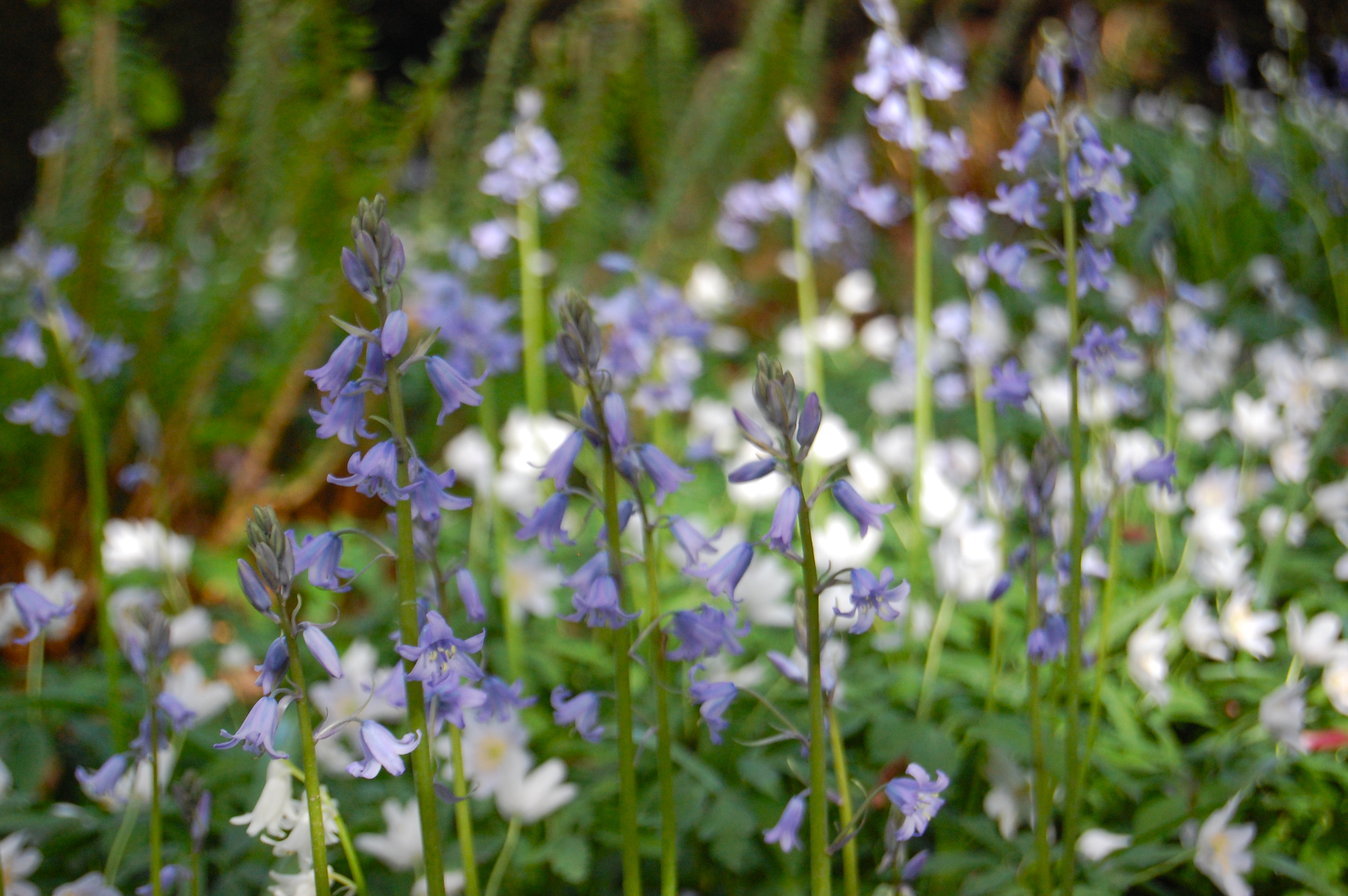Spring is hands down my favorite season for flowers! Each new phase of blooms, from violets and daffodils to lilacs and peonies, thrills me! Right now, I am enchanted by all the woodland bluebell photos from my English friends as well as the small patches of bluebells in my own city of Portland.

Bluebells make charming springtime bouquets, and couldn’t be easier to maintain. Learn how you can add a wild patch of bluebells to your garden design, perhaps under a patch of apple trees or alongside other shade-loving plants like hostas.
Planting bluebells: how to make your own wild bluebell patch!
Varieties
There are two common varieties of bluebells: Spanish (Hyacinthoides hispanica) and English (Hyacinthoides non-scripta). English bluebells are actually protected under law in England. These native flowers bloom in forests across England in late spring, creating magical forests of blue blooms each year. Read more about English bluebell forests at The Woodland Trust. Spanish bluebells (pictured here) also have bell-shaped flowers but are a bit paler in shade than English bluebells, and don’t have the curve of the stem. They also come in pink and white, and usually spike around 15-18 inches. It’s best to plant the variety that’s native to your area. Both bloom in late spring and offer a wild, low-maintenance touch to any garden. Take some inspiration from English bluebell forests to make your own little bluebell patch at home.
How to plant bluebells
Bluebells are bulbs and like most bulbs, need to be planted in the fall, so you’ll need to plan ahead. Plant them in partial to full shade. The soil should have good drainage. Plant four inches deep. You can plant under trees, just be sure to add some compost to the soil. To get the bulbs looking natural and wild, you can actually just toss the bulbs into the soil, and plant them where they land. Ideally, you should plant them four to six inches apart to allow them to spread. These bulbs are easy to care for, and will multiply if left in a shady, well-drained soil. Bluebells are charming paired with other spring shade-lovers like violets and sweet woodruff, which will also easily spread. They are also deer resistant—a major bonus!
Maintenance
Like most bulbs, don’t pull the greenery after they bloom; leave the green to yellow (it will be mid-summer) and then you can pull the leaves out, if you’d like. Water when you plant them in the fall, and as needed. Cut the blooms for bouquets in the spring, just as they start to open the buds, for the longest lasting cut blooms.
Pros and cons of planting bluebells
Spanish bluebells are actually an invasive species in the UK. If you live in the UK, think twice before planting the Spanish variety, though it naturalizes quickly, it’s a threat to the native variety because it hybridizes with them, therefore diluting the native plants. English Bluebells are actually protected in the UK. Some people don’t like growing bluebells in their home gardens because they spread so rapidly and can take over rather quickly! Perhaps you could segregate them to a wooded area or a patch away from your main garden. They do send out runners and multiply quite quickly. If you find they are taking over your garden, dig up the bulbs while they are still in bloom and dispose in the garbage — not the compost — where they will continue to spread.

Discover even more about bluebells through some of my favorite sources: Bluebell Walks and The Woodland Trust.

Share tips, start a discussion or ask one of our experts or other students a question.
No Responses to “Enchanted by Beautiful Bluebells?”